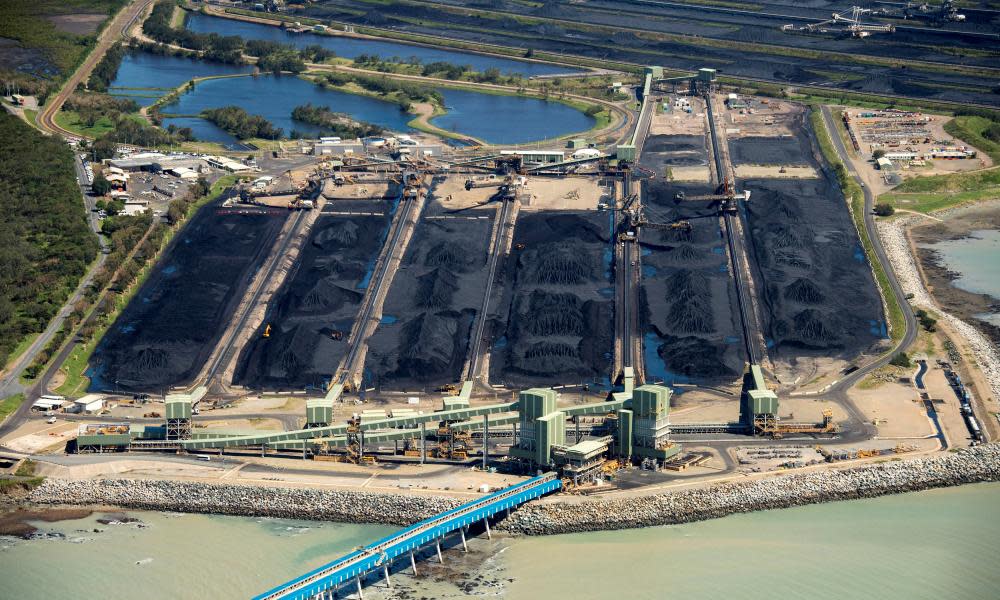Great Barrier Reef authority gives green light to dump dredging sludge

The Great Barrier Reef Marine Park Authority has approved the dumping of more than 1m tonnes of dredge spoil near the reef, using a loophole in federal laws that were supposed to protect the marine park.
The Greens senator Larissa Waters has called for the permit – which allows maintenance dredging to be carried out over 10 years at Mackay’s Hay Point port and the sludge to be dumped within the marine park’s boundaries – to be revoked.
“The last thing the reef needs is more sludge dumped on it, after being slammed by the floods recently,” Waters said. “One million tonnes of dumping dredged sludge into world heritage waters treats our reef like a rubbish tip.”
Acting on concerns from environmentalists, the federal government banned the disposal of dredge spoil near the reef in 2015. But the ban applied only to capital dredging. Maintenance work at ports – designed to remove sediment from shipping lanes as it accumulates – is not subject to it.
On 29 January the marine park authority granted conditional approval for North Queensland Bulk Ports to continue to dump maintenance dredge spoil within the park’s boundaries. The permit was issued just days before extensive flooding hit north and central Queensland, spilling large amounts of sediment into the marine environment.
Waters said the distinction between capital and maintenance dredging made little difference to the reef.
“The backflip by state and federal Labor and Liberal governments several years ago, after sustained pressure from the Greens and the community, to ban offshore dumping from capital dredging shows they understand the damage this sludge can do to the marine environment – all the more so now that 50% of the corals have died from successive bleaching,” Waters said.
“Government policy needs to change to ban all offshore dumping, so GBRMPA is not allowed to permit the reef’s waters to be used as a cheaper alternative to treating the sludge and disposing of it safely onshore.”
North Queensland Bulk Ports, in a statement posted online shortly after the permit was issued, said it had to meet conditions to protect the marine environment. The ports authority said its dumping plan was peer-reviewed and considered best practice.
“Just like roads, shipping channels require maintenance to keep ports operating effectively,” the ports authority said. “Maintenance dredging involves relocating sediment which travels along the coast and accumulates over the years where our shipping operation occurs.
“Importantly, our assessment reports have found the risks to protected areas including the Great Barrier Reef Marine Park Authority and Great Barrier Reef Marine Park and sensitive habitats are predominantly low with some temporary, short-term impacts to (bottom-dwelling) habitat possible.
“The permits allow for the long-term, sustainable management of maintenance dredging at the Port and will safeguard the efficient operations of one of Australia’s most critical trading ports.”
Maintenance dredging will begin in late March. Initial dredging will take about 40 days.

 Yahoo News
Yahoo News 
